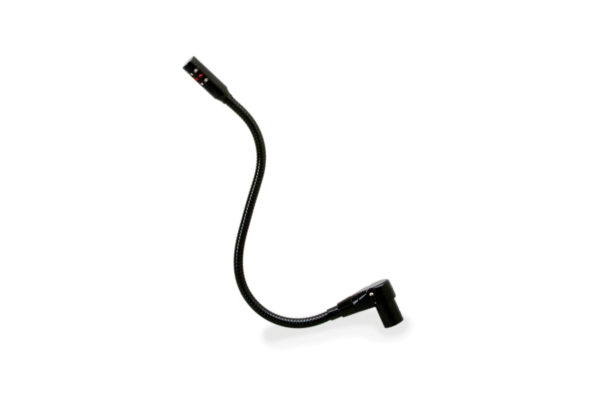Microphone Cable
XLR3F to Right-angle 3.5 mm TRS
This XLR mic cable is designed to connect a stereo microphone with a single XLR output to a mini stereo phone 3.5 mm input. It is ideal for connecting a shotgun mic to a DV camera. Features include:
• XLR connector with internal strain relief for rugged reliability
• Oxygen-Free Copper (OFC) conductor for enhanced signal clarity
• OFC spiral shield for effective EMI and RFI rejection and flexibility
Connectors: XLR3F to Right-angle 3.5 mm TRS
Downloads:
XVS-100F Wiring Diagram
About XLR to 3.5 mm Cables
What is an XLR to 3.5 mm Cable?
3.5mm connectors, also referred to as “aux”, “mini”, or “⅛” connectors, are found on many small electronic devices. They can be used as audio inputs or stereo outputs. An XLR connector is a 3-pin audio connector type most often used with microphones.
When to Use an XLR to 3.5 mm Cable
Some electronic devices will be designed for a 3.5mm microphone input, such as cameras. Since most common microphones used with cameras, such as boom mics, utilize an XLR connector, a 3.5mm to XLR microphone cable is the ideal solution.
What are the Benefits of Using the XLR to 3.5 mm Right-angle Cable?
The right angle 3.5mm connector allows for a more compact and discrete connection into the camera. A straight connector on some cameras might be intrusive and get in the way of other functions and ease of being held. The last thing you need on your camera’s already limited space is cable-clutter.
Connecting XLR Connectors
XLR connectors are among the most secure connections in the audio industry. It may be the reason they were also adopted by the lighting industry when they developed DMX512. The three-pin design isolates each of the contact points, ensuring a solid connection with ground and each conductor. In addition, the connector locks when it makes the connection. The female side of the connector includes a button to move a locking catch that grabs onto the inside part of the male shell.
Some connectors, like the Oyaide brand from Japan used on our premium Zaolla Silverline cables, utilize a unique locking mechanism that requires a push-pull action on the connectors instead of the button. The connection is even less likely to get accidentally disconnected and functions with all other XLR manufacturers.
XLR Connectors Sizes, Pins, and Use Cases
Although the term “XLR” usually refers to a traditional 3-pin XLR, it can refer to several types. XLR connectors can be found in 3-pin, 4-pin, 5-pin, and “mini” configurations that are sometimes “universally wired”, and other times proprietary for specific equipment.
3-Pin (XLR3)
The most common type of XLR connection is 3-pin XLR. These are used for most analog audio functions like microphones, audio interfaces, studio monitors, and other audio interconnect applications. Some lighting (DMX) also utilize 3-pin XLR connector types.
4-Pin (XLR4)
A 4-pin XLR is far less common and typically reserved for intercom systems, such as ClearCom and Telex. The headphone signal utilizes two of the pins, with the other two pins used for the microphone signal.
5-Pin (XLR5)
The most common use for 5-pin XLR connectors are with lighting, or DMX cables but there are audio manufacturers who use it, as well. Below, are the common wiring conventions for each:
Analog 5-pin XLR:
Pin 1: Chassis Ground
Pin 2: Power Ground
Pin 3: Positive
Pin 4: Negative
Pin 5: Phantom Power
DMX 5-pin XLR:
Pin 1: Ground
Pin 2: Data (-)
Pin 3: Data (+)
Pin 4: Aux Data (-)
Pin 5: Aux Data (+)
What is the Difference Between XLR and DMX Cables?
While they may utilize the same connector type, XLR and DMX cables provide very different functions. Typical XLR cables are made for analog audio, but DMX cables are made specifically for lighting purposes. You can read more about the difference in our blog XLR vs. DMX: What’s the Difference?









